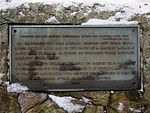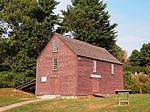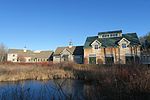Old York Gaol
1719 establishments in the Province of Massachusetts BayBuildings and structures in York, MaineDebtors' prisonsDefunct prisons in MaineGovernment buildings completed in 1719 ... and 12 more
Historic district contributing properties in MaineHistory museums in MaineInfrastructure completed in 1719Jails in MaineJails on the National Register of Historic Places in MaineMuseums in York County, MaineNRHP infobox with nocatNational Historic Landmarks in MaineNational Register of Historic Places in York County, MainePrison museums in the United StatesUse American English from November 2022Use mdy dates from November 2022

The Old York Gaol is a former colonial prison at Lindsay Road and Main Street (United States Route 1A) in York, Maine. Its oldest portion dating to about 1720, it is one of the oldest prison buildings in the United States, and one of the oldest public buildings in the state of Maine. It was designated a National Historic Landmark in 1968. It is owned by the Museums of Old York and is open for tours between May and October.
Excerpt from the Wikipedia article Old York Gaol (License: CC BY-SA 3.0, Authors, Images).Old York Gaol
York Street,
Geographical coordinates (GPS) Address Website External links Nearby Places Show on map
Geographical coordinates (GPS)
| Latitude | Longitude |
|---|---|
| N 43.14375 ° | E -70.65165 ° |
Address
Old Gaol Museum
York Street 193
03909
Maine, United States
Open on Google Maps









